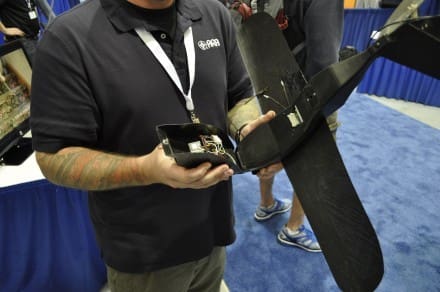MINNEAPOLIS and ALBUQUERQUE, N.M. (February 6, 2018) — Team Polaris is displaying its advanced MRZR® X multi-mode, connected vehicle platform for the first time this week at the AUVSI Unmanned Systems show. As military forces worldwide look to lighten the warfighter’s load now and smartly network vehicles in the multi-domain battlefield in the coming years, the MRZR X provides an evolving, robotics capable, multi-mission platform. In addition, the MRZR X provides worldwide commonality with the MRZRs already in service in the U.S. and more than 30 allied nations.

“The MRZR is the preferred platform among infantry units and Special Forces worldwide, which helps make its integration and the transition from manned to unmanned systems easier for the warfighter,” said John Olson, PhD, vice president and general manager of Polaris Government and Defense. “The MRZR X maintains the MRZR mission profile and payload our customers are accustomed to, plus it has additional robotic and networked capabilities to further support warfighters.”
The MRZR X provides warfighters with a modular support platform and various modes of operation: traditional operator driving and multiple levels of autonomy, including the capability for remote control, teleoperation, follow-me, leader-follower and full autonomy. This allows the MRZR X to enhance and evolve mobility in varying roles, such as robotic equipment mule, autonomous resupply, warfighter-driven squad carrier, logistics support vehicle, rescue missions and high-speed casualty evacuation. In the future, the connectivity of the MRZR X will provide the ability to act as a networked node in the multi-domain battlespace.
ARA has been producing Modular Robotic Applique Kits (M-RAKs) for more than 20 years, with a specialty in off-road robotics, further enhanced by the acquisition of Neya Systems. The advanced MRZR X fully integrates the autonomy systems and optimally places the sensors to safeguard the technology while keeping the physical and software architecture open so it can spiral in future technology. The vehicle drivetrain is powerful and reliable, allowing for longer missions, high speeds and silent drive when needed – all on the very familiar, sustainable and intuitive MRZR platform.
Polaris Industries Inc., Applied Research Associates Inc. (ARA) and Neya Systems LLC formally teamed in 2017. The Team Polaris MRZR® X evolves squad mobility with advanced unmanned systems technology from ARA and the pioneering and unsurpassed autonomous systems behavior of Neya Systems. Team Polaris has many pursuits – together and individually – with U.S. services, allied militaries and commercial programs.




















































































































